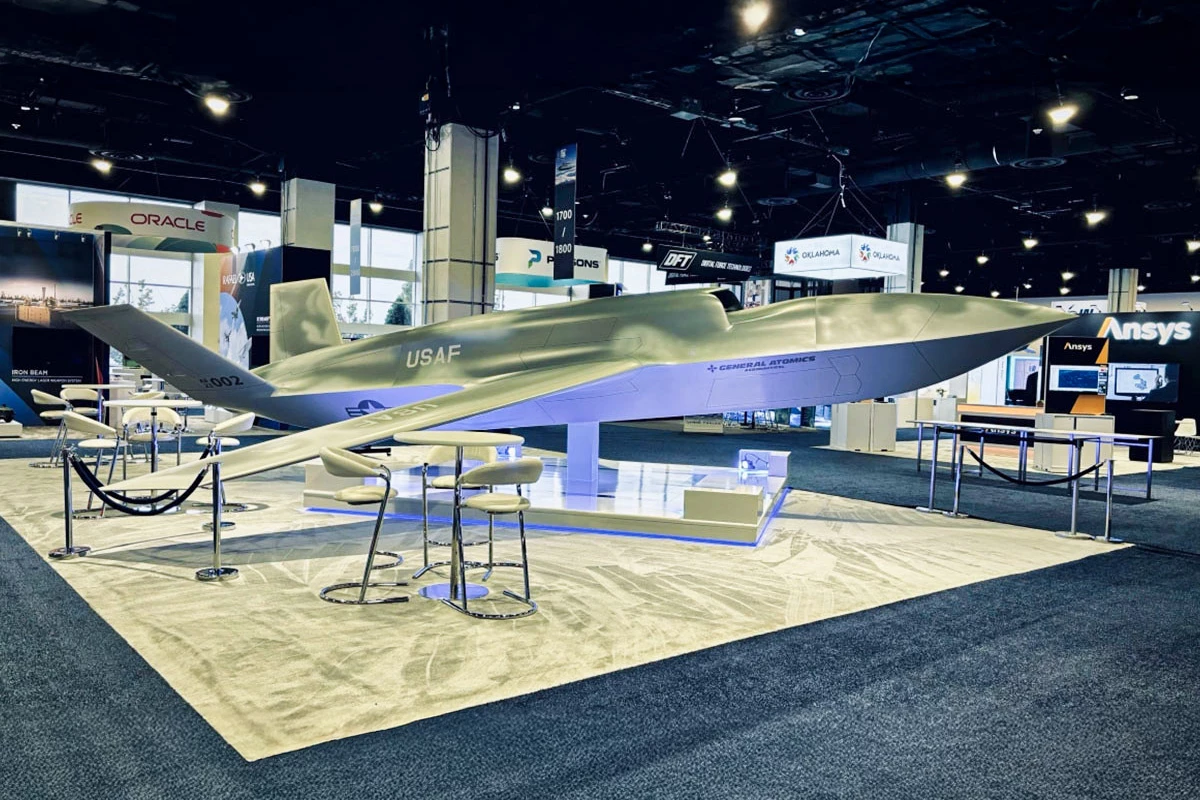Giving a preview of the future of military aircraft, General Atomics unveiled a full-scale mock-up of its Collaborative Combat Aircraft (CCA), which is an autonomous warplane designed to augment air forces with cheaper, expendable robotic fighters.
The mock-up was the centerpiece at General Atomics' display at this year's Air Force Association (AFA) Air, Space & Cyber Conference in Washington, DC and illustrates a major focus of the next generation of fighter planes. The autonomous subsonic aircraft is being developed as part of the US Air Force's CCA program and is based on the company's XQ-67A prototype.
The purpose of the CCA is manyfold, though it is focused on a number of basic problems facing modern air forces. In essence, the CCA and similar aircraft are being developed to change the role of a fighter pilot from someone who flies an aircraft, monitors its sensors, and fires its weapons to someone who acts more like a squadron commander, with the piloted plane accompanied by several autonomous ones that act as sensor or weapon platforms.
These robotic wingmen would fly themselves and would move ahead of the command plane. They would even act in concert, deciding between themselves how to complete their mission or deal with hostile forces.
The reason for all this isn't just taking advantage of modern technological advances. The cost of building fighter planes has risen by an insane amount since the Second World War to the point where some experts have estimated that if things continued on their current trajectory, by the 2050s the United States would only be able to afford one fighter plane.
That's not one variety of plane. That's one plane.
Related to this, the shrunken production lines of all the major Western defense plane builders are maxed out and even with the deteriorating geopolitical situation driving a new arms race, there's no room for increased output. Even the prospect of sixth-generation fighters is being pushed back because of this.
Add into this the cost of recruiting, training, supporting, and retaining fighter pilots in sufficient numbers and the economics become intolerable.
In this light, the CCA is intended to help alleviate this bottleneck by providing a way to build enough autonomous aircraft to not only shoulder some of the load, but also to act as a force multiplier that reduces the risk to human pilots.
However, putting this into practice is more complicated than just building robotic fighters. The technology is still nowhere near mature enough and there are serious ethical implications that will require humans to be very closely in the loop instead of simply sitting at a safe distance while autonomous aircraft use deadly force on their own initiative. This was emphasized by Frank Kendall, secretary of the US Air Force speaking at the US Chamber of Commerce’s Global Aerospace Summit in Washington, DC, US, on September 10, 2024.
"One of the things you have to have if you’re going to use CCAs and have them be armed and lethal is that they have to be under tight control," Kendall said. "And for me, one of the elements of that needs to be line-of-sight communications," said Kendall. "Line-of-sight communications refers to direct links between a transmitter and receiver without obstructions like the curvature of the Earth.
"We’re not going to have aircraft going out and doing engagements uncontrolled, so the default, if they lose communications, would be for them to return to base, which takes them out of the fight. So we don’t want that to happen. And when they do do engagements, we want them under tight control."
Source: General Atomics





